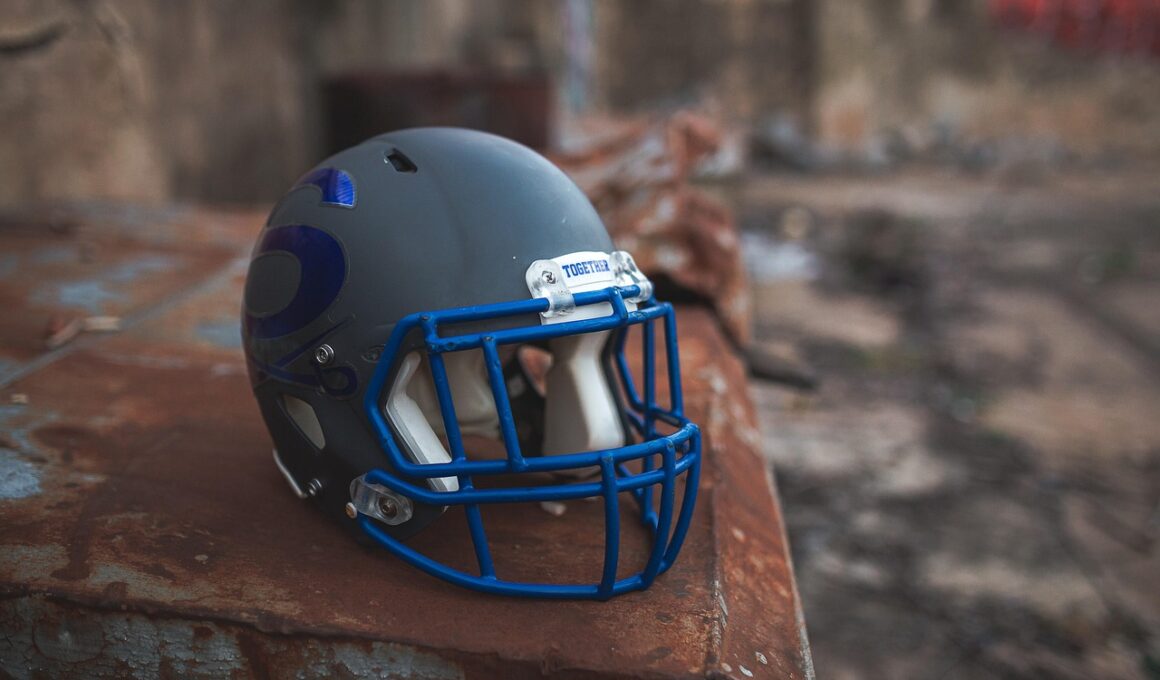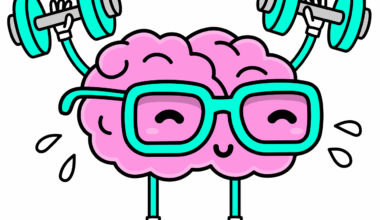The Importance of Protective Gear in High-Impact Sports
Participating in high-impact sports offers thrill and excitement, but it also brings significant risks of injuries. Protective gear acts as a crucial layer of defense for athletes, helping reduce the severity of injuries that may occur during gameplay. For instance, helmets are designed to protect the head from high-impact collisions while shin guards prevent injuries to the lower leg. Without proper protective gear, athletes may face long-term health complications that can hinder their sports careers. In many sports, gear is not just recommended; it is mandatory for participation. Proper training on how to wear and maintain this gear correctly is equally as important as the gear itself. Athletes must understand the fundamentals of correct usage to ensure maximum protection. This includes fitting equipment correctly, inspecting for damage, and understanding their limits during use. Coaches and support staff play a key role in promoting safe practices and routine checks to safeguard athletes. Proper usage significantly lowers the risk of injuries and fosters a safer sporting environment, allowing athletes to focus on enhancing their performance without the looming fear of injuries.
Types of Protective Gear Available
Protective gear varies significantly across different sports, each tailored to meet specific safety needs based on the nature of the sport. Common types of protective gear include helmets, pads, mouth guards, and specific footwear. Helmets are vital in sports like football and cycling, where head injuries can be catastrophic. Protective pads, such as shoulder and knee pads, are essential in contact sports such as hockey and rugby to absorb impacts during falls or collisions. Mouth guards protect teeth and help in minimizing concussions in sports with significant physical contact. In sports like skateboarding and Rollerblading, wrist guards help prevent fractures during falls. While gear varies, its primary function remains the same: to minimize injury risk and enhance safety. Proper fitting is critical; gear that is too loose or tight can compromise effectiveness and comfort. Athletes should invest time to get professionally fitted equipment rather than choosing off-the-shelf products. Understanding how gear works can increase athletes’ confidence and performance, knowing they are adequately protected. Consequently, education on gear types and uses should form an essential part of an athlete’s training regimen.
Injuries can occur even when athletes take precautions, highlighting the need for understanding the limitations of protective gear. While protective items such as helmets and pads are effective in dampening the force of impact, they do not completely eliminate the risk of injuries. For instance, while helmets reduce the chances of skull fractures, they are not foolproof against concussions. Athletes must also be aware that protective gear can shift during play, leading to inadequate protection if not secured correctly. Hence, it’s vital for athletes to complement protective gear with good playing techniques and strategies to mitigate injury risks. Upholding a high level of fitness and preparing through proper warm-ups can enhance muscle and joint resilience. Awareness of one’s own limits when engaging in contact must also be imparted. Consequently, while protective gear is indispensable, it only forms one part of a comprehensive injury prevention strategy. Regular discussions and educational sessions focusing on these aspects can ensure athletes are fully equipped to embrace their sporting activities responsibly. This emphasis on education may ultimately lead to a culture of safety that encourages athletes to engage longer in their sport.
Role of Coaches and Trainers in Safety Measures
Coaches and trainers play a pivotal role in ensuring comprehensive safety measures during training and competitions. They are responsible for enforcing the use of protective gear, ensuring all players are outfitted with helmets, pads, and other necessary equipment before participating in any practice or game. Beyond mere enforcement, they must also educate athletes on the significance of using gear correctly, explaining how it contributes to injury prevention. Periodic checks should be routine to guarantee gear effectiveness and proper fitting. Engaging with athletes in discussions about their comfort with equipment can lead to identifying potential issues early and modifying practices as necessary. Trainers should also encourage athletes to voice concerns regarding any discomfort they may experience while wearing gear. Implementing a culture of safety within the team via drills that emphasize correct protective gear usage can ensure a consistent commitment to protective measures. Coaches should remain up-to-date with the latest advancements in protective gear technology and techniques. Collaborating with sports safety specialists may also aid in building awareness and creating a comprehensive safety plan to keep athletes safer during physical activity.
Another vital aspect of injury prevention through protective gear is educating parents and guardians, especially for youth athletes. Understanding the right equipment for their children and the correct way to use it is crucial in fostering safe sporting environments. Parents should be involved in purchasing appropriate gear, ensuring it meets safety standards outlined by sports organizations. Communication between parents, coaches, and athletes can help reinforce the importance of using protective gear. Organizations often provide resources to help educate families on selecting proper gear, including fitting guidelines and care instructions to maintain effectiveness. Parents can also advocate for safety by ensuring their children understand the value of gear during play. They should encourage adherence to safety rules and express the significance of preventing injuries. By purchasing quality gear, families not only protect their children but also promote a commitment to safety within their teams. Furthermore, active participation in discussions around gear usage allows parents to reinforce, along with coaches, an injury-prevention mindset that fosters safer sporting environments, enhancing their children’s enjoyment and longevity in sports.
Impact on Performance and Confidence
The use of protective gear has a notable impact on an athlete’s performance and confidence levels. When athletes are secure in the knowledge that they are well-protected, it enables them to focus wholly on their performance rather than on the fear of injuring themselves. Protective gear allows them to push their limits, undertake challenging maneuvers, and engage more actively during competitions. Many athletes report feeling invincible when wearing quality protective gear, as this reassurance permits them to play with more intensity and enthusiasm. This newfound confidence can contribute to improved performance outcomes, as athletes are less inhibited. Additionally, consistent use of appropriate protective gear can minimize recovery time from any minor injuries sustained during play, allowing athletes to return to their sport far sooner. The psychological aspect of safety cannot be overlooked; knowing they have adopted precautions can enhance athletes’ mental resilience. Hence, protective gear is not merely a physical barrier against injuries—it also nurtures an athlete’s mindset, encouraging more aggressive play styles that could lead to both personal records and team successes.
In summary, the importance of protective gear in high-impact sports cannot be overstated. It serves a critical function in reducing the risk of injuries, safeguarding both amateur and professional athletes. Its effectiveness is substantially enhanced by proper usage, regular maintenance, and a collective understanding among athletes, coaches, and family members. The benefits of harnessing such equipment are two-fold; not only does it protect physical health, but it also fosters confidence and encourages a positive sporting culture. Implementing each of these components into an athlete’s routine can create an environment where safety and performance go hand in hand. Given the longevity of athletes’ careers and their ongoing commitment to sports, leveraging protective gear must involve continuous education and improvement. Thus, nurturing a culture of safety ensures that every athlete engages in their sport fully, with minimized risks. Concerted efforts in awareness, proper training, and consistent communication can weave protective gear into the very fabric of sports practice. Encouraging the right attitudes towards safety positions athletes for success, not just in their immediate competitions, but throughout their sporting journeys.
In the world of high-impact sports, the significance of employing protective gear cannot be underestimated. This gear not only serves as vital equipment to reduce the potential for injury but also instills a sense of safety that can enhance athletic performance. Each type of gear, whether it is a helmet or pads, has a unique purpose that collectively contributes to an athlete’s overall safety and confidence. The correct utilization and maintenance of this gear can make a substantial difference in preventing injuries during events and training. Furthermore, more than simply wearing protective equipment is required: understanding how to wear it correctly maximizes its benefits. It is essential for both athletes and coaches to prioritize education and awareness regarding the need for protective gear. This understanding encourages athletes to embrace safety measures actively. In sports where competition is fierce and risks are high, consistently employing protective gear is a key aspect that should never be overlooked. As sports continue to evolve, so should the emphasis on protective gear, ensuring athletes are not only prepared to compete but to thrive safely in their respective sports.


